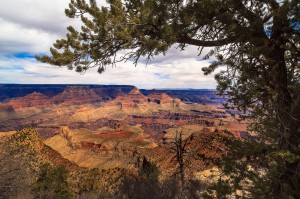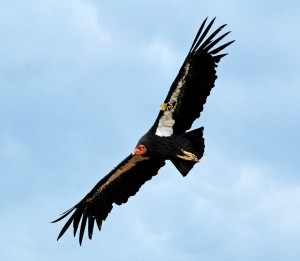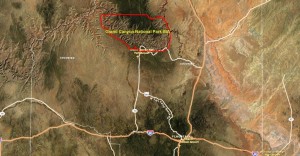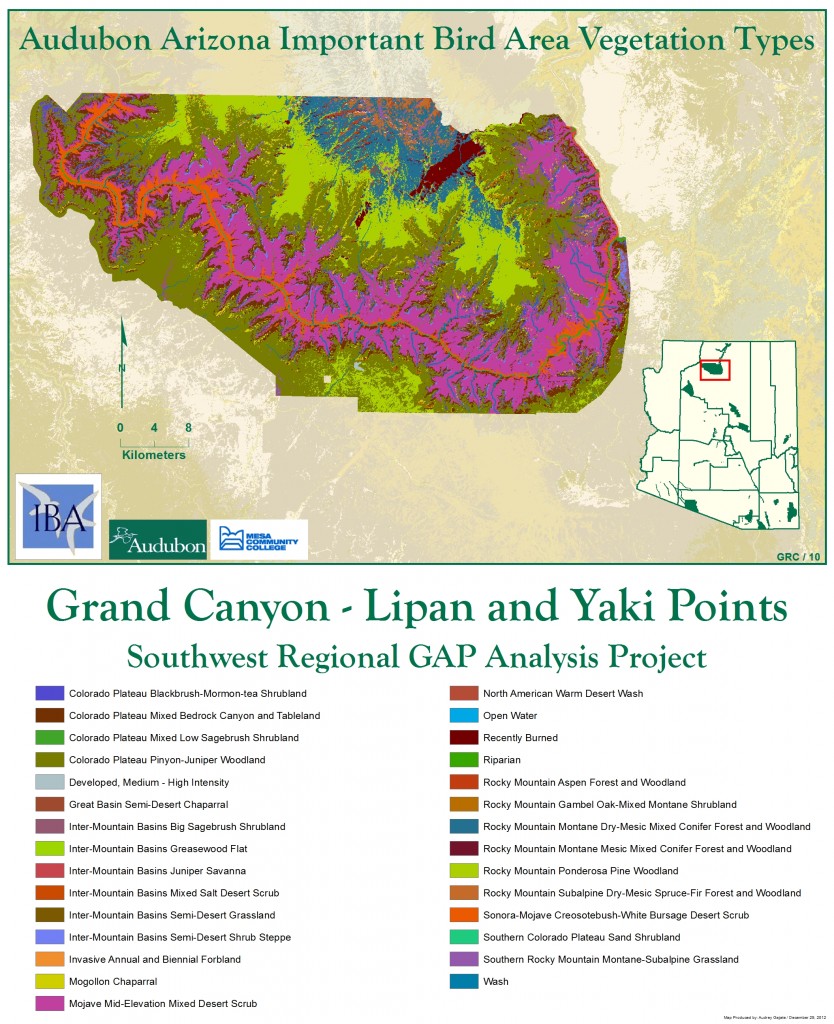Global IBA for California Condor and Mexican Spotted Owl
Size: 778 square miles, 497,894 acres
Identified: 07/2002
Visiting the IBA: To visit the South Rim of the Grand Canyon where Lipan and Yaki Points are located, take I-17 North to Flagstaff, Arizona and then take Highway 89 North to just before Cameron and take State road 64 West to the Park. Fall and Spring are the best times to visit.
Ownership: Grand Canyon National Park
Site Description: This IBA includes the entire Grand Canyon National Park and two hawk watch points on the south rim of the Grand Canyon, Lipan and Yaki Points.
Birds: The Grand Canyon cliff promontories function as important air space of a major migratory corridor for raptors. Up to 19 species have been recorded at least once, and 10,000 to 12,000 individuals average per fall migration season. Two to three nest sites for the endangered California Condor are documented within the canyon. Bald Eagles fish the trout rich waters of the Colorado River in the winter.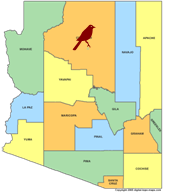
Breeding: 48 bird species regularly nest along the river and the inner canyons, Peregrine Falcon, Prairie Falcons and Golden Eagle, Mexican Spotted Owl, Bell’s Vireo and Lucy’s Warbler. The forested habitat has nesting Northern goshawk and Cassin’s Finch. Pinyon Jay are in the Pinyon and juniper habitat.
Migration: Northern Harrier, Broad-winged Hawk, Swainson’s Hawk, Red-tailed Hawk, Ferruginous Hawk, Northern Rough-winged Hawk, Cooper’s hawk, Sharp-shinned Hawk, American Kestrel, Merlin, Bald Eagle, Osprey, Turkey Vulture.
Global Criteria: Two to three breeding territories for California Condor have been identified within Grand Canyon National Park. Major survey efforts for Mexican Spotted Owl breeding population in the Grand Canyon National Park were conducted in 2001-2002 and in 2006. Results of the intensive survey effort in 2001 and 2002 yielded a grand total of 56 territories, or approximately 112 owls in the park. All owls were located within mid- and low-elevation steep canyon habitat. To date, surveys have covered about 50% of suitable steep canyon habitat predicted by the GIS models; thus a population of over 200 spotted owls could be present in these habitats in Grand Canyon.
Conservation Concerns: Low-flying site seeing aircraft is a potential threat, but otherwise this site faces no threats.
Site Stewardship: Hawk Watch International for the raptor monitoring. Monitoring dates are August 27 to November 5. Information about the hawk monitoring and how you can help by being a hawk watch volunteer can be found at: http://www.hawkwatch.org/migration
Maps of this Important Bird Area:
State of the IBAs 2014 Baseline – More Technical info about the status of this Important Bird Area
National Audubon Profile Page for Grand Canyon National Park IBA
Complete eBird.org Checklist of birds Reported for Grand Canyon National Park IBA
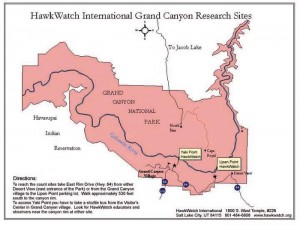
For an interactive map and habitat and land ownership analysis of this IBA visit the National Audubon IBA Map and select “Arizona” and then the name of this Important Bird Area. To access analysis graphs, click on the map boundary of the IBA.
Location: 36.0330°N: 111.8532°W Lipan Point
County: Coconino36.0586°N: 112.0838°W Yaki Point
Area: 778 square miles, 497,894 acres
Site Status: Identified 07/2002, expanded 10/2011
Ownership: Federal – Grand Canyon National Park
Criteria: A1: Global: Species of Conservation Concern – California Condor, Mexican Spotted Owl, and Pinyon Jay
D4vi: State: raptors/season
This Important Bird Area (IBA) originally consisted of Lipan and Yaki Point raptor monitoring sites on the south rim of the Grand Canyon. The IBA now includes the entire Grand Canyon National Park. The site steward for the raptor monitoring is Hawk Watch International. Monitoring dates are August 27 to November 5 at
Yaki Point. Information about the hawk monitoring and how you can help by being a hawk watch volunteer can be found at:http://www.hawkwatch.org/migration/migration.php
| Vegetation Description | Hectares |
| GREAT BASIN DESERTSCRUB | 257916.4 |
| MONTANE (MOUNTAIN MEADOW) GRASSLAND | 1380.317 |
| MONTANE CONIFER FOREST | 1431.574 |
| PINE COMMUNITIES | 52638.99 |
| PINYON – JUNIPER COMMUNITIES | 648326.7 |
| SPRUCE – ALPINE FIR COMMUNITIES | 31417.59 |
Ornithological Summary:
| Species or group | Season | Maximum | Year |
| Red-tailed Hawk | fall passage | 3,229 individuals | 1992 |
| Sharp-shinned Hawk | fall passage | 3,333 individuals | 1999 |
| Cooper’s Hawk, | fall passage | 2,824 individuals | 1998 |
| American Kestrel | fall passage | 2,356 individuals | 1997 |
| Turkey Vulture | fall passage | 434 individuals | 1997 |
| Northern Harrier | fall passage | 186 individuals | 1999 |
| Osprey, fall passage | fall passage | 185 individuals | 1997 |
| Northern Goshawk | fall passage | 42 individuals | 1992 |
| Broad-winged Hawk | fall passage | 54 individuals | 1998 |
| Swainson’s Hawk | fall passage | 72 individuals | 1999 |
| Ferruginous Hawk | fall passage | 18 individuals | 1999 |
| Golden Eagle | fall passage | 62 individuals | 1992 |
| Bald Eagle | fall passage | 49 individuals | 1993 |
| Merlin | fall passage | 38 individuals | 1999 |
The Grand Canyon National Park cliff promontories function as important air space of a major migratory corridor for raptors. Up to 19 species have been recorded at least once, and 10,000 to 12,000 individuals average per fall migration season. Hawk Watch International initiated standardized counts along the South Rim of the Grand Canyon at Lipan Point in fall 1991, and began a second full-season count at Yaki Point in 1997. Combined counts at the two sites typically exceed 10,000 migrants of up to 18 species, plus California Condors can often be seen in the local area. Because Grand Canyon National Park attracts millions of visitors each year, these counts represent very important educational opportunities. The IBA was expanded in 10/2011 to include the entire the National Park because of the importance of the cliff habitat for nesting spotted owls, California condors, Peregrine falcons, Golden eagles, Prairie falcons, and White-throated swifts, plus the many bird species that live in the riparian habitats along the river.
California Condor 2011 resident breeding 3 birds
Pinyon Jay 2011 resident breeding 90+
Spotted Owl 2006 resident breeding 200+
Peregrine Falcon 1989 resident breeding 150
Conservation Issues: Low-flying site seeing aircraft, invasive plant species, uranium mining (outside of the park boundaries), wild fire in the forest and pinyon pine habitats, lead poisoning of California condors (lead occurs at sites outside of the Important Bird Area, usually as bullet fragments in gut piles of hunter killed big game).

